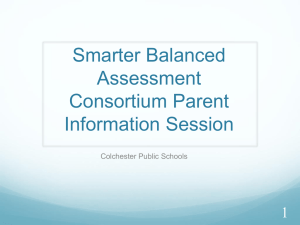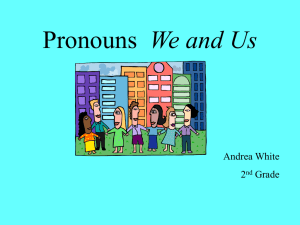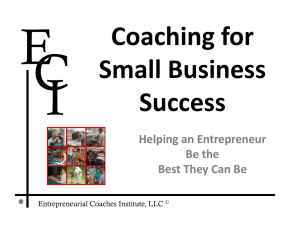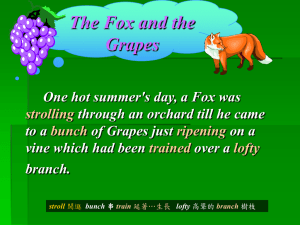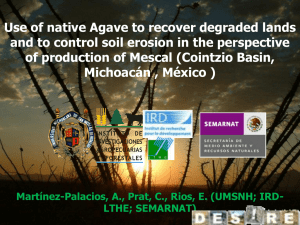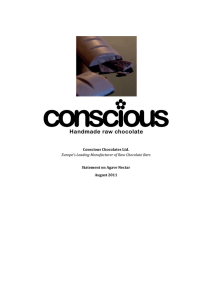Scientific Method Power Point notes with Lemonade Experiment
advertisement
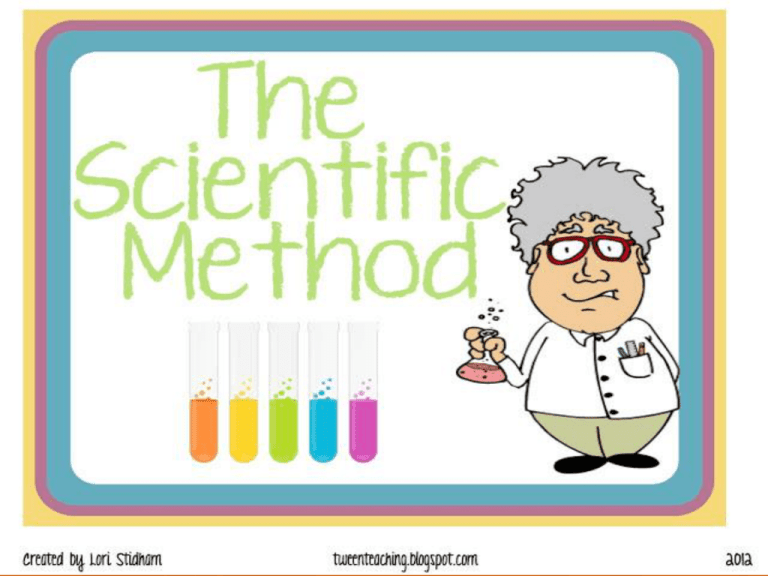
Scientific Method Observation This is the first stage in understanding a problem that you are solving by conducting an experiment. In this stage, you collect information from your surroundings or from research. Problem The specific problem or concept you are investigating. Every step of the experiment is conducted to solve this problem. Variable A factor or condition that can exist in differing amounts or types. Many experiments have 3 different types of variables. The 3 Variables Independent: The experimenter changes this variable. Dependent: The variable that responds to the changes of the independent variable. The experimenter observes the outcomes of the change. Control: The factor that remains consistent. Variables in Good Experiments In a good experiment, there is only one independent variable. That way, only one factor creating change is observed at a time. In a good experiment, the independent, dependent, and control variables, can be measured by the scientist. Hypothesis An educated guess about how things work. Most of the time, a hypothesis is written like this: “If ____ [I do this] ____, then ____ [this] ____ will happen.” This must be worded so that it can be tested in your experiment. Do this by writing the hypothesis using your independent variable and your dependent variable. Experiment Test your hypothesis by changing the independent variable and observing the changes of the dependent variable. Record the change of your dependent variable. This is your data. Experiment Participants People responding to your experiment. For example, you might ask people to respond to a survey as your experiment. Collect identifying information that might influence their response to the survey. For example: age, gender, geographic location. Experiment Tips Keep as many things in your experiment as identical as possible so you isolate the tested variable. If you have time, repeat the experiment! That way you can find out if your results are accurate. Collecting Data Be consistent, careful, and accurate when you take your measurements. There are 2 types of data Qualitative – descriptions of qualities Quantitative – quantities or numerical measurements Numerical measurements are best. Take pictures as you conduct your experiment. They will be extremely valuable in your presentation. Results An explanation of the data. Patterns are generally noted. Usually reported in a graph or chart to see the pattern easier. Conclusion The final step! State if the hypothesis was supported or not. It’s okay if the hypothesis is not supported! Explain why you think the hypothesis was supported or not. Lemonade Experiment Example of the Scientific Method Observation Lemonade requires lemons, water, and sugar. I try to watch how much sugar I consume. I wonder if I could use different sweeteners like honey or agave nectar in my lemonade? Problem If I make my lemonade with agave nectar or honey, then will it taste as sweet as lemonade made with sugar? The 3 Variables Independent: Type of sweetener – agave nectar and honey Dependent: Taste of sweetness Control: Sugar Lemonade Experiment Hypothesis If I make lemonade using honey, then it will be just as sweet as lemonade made with sugar. If I make lemonade using agave nectar, then it will be just as sweet as lemonade made with sugar. Independent variable: honey or agave nectar Dependent variable: sweetness Experiment Set-Up I made 3 pitchers of lemonade Each pitcher has equal amounts of lemon juice and water. In each pitcher, I mixed ¼ cup of lemon juice into 5 cups of water. Pitcher A: I added ½ cup sugar Pitcher B: I added ½ cup honey Pitcher C: I added ½ cup agave nectar Experiment Set-Up Each participant received 3 clear plastic cups. Each cup was labeled to match the pitcher from which the lemonade was poured. Three tablespoons of each lemonade were poured into the corresponding plastic cup. Participants drank the lemonade and ranked the sweetness on a 1 – 5 scale, with one being not sweet to five being very sweet. Keep in mind: all of this information should be written in your procedures section of your report. Experiment Title The effect of honey or agave nectar on the sweetness of lemonade. Experiment Participants 25 people – 12 males 13 females Average age = 20 years Age matters in this experiment because studies have shown that perceived sweetness changes with age. Data Sample Participant Pitcher A Sweetness Rating Pitcher B Sweetness Rating Pitcher C Sweetness Rating A 4 2 4 B 4 2 3 Pictures Make sure you show: Procedure – making the lemonade, setting up the pitchers and cups, participants drinking lemonade Results – if anyone had a strong physical reaction to drinking the lemonade, like if they made a sour “pucker” face. Results Pitcher A (sugar): Participants indicated an average rand on the sweetness scale of 4, sweet. Pitcher B (honey): Participants indicated an average rank on the sweetness scale of 2, somewhat sweet. Pitcher C (agave nectar): Participants indicated an average rank on the sweetness scale of 4, sweet. Conclusion I I make lemonade using honey, then it will be just as sweet as lemonade made with sugar. NOT supported. If I make lemonade using agave nectar, then it will be just as sweet as lemonade made with sugar. Supported. Agave nectar might be perceived as sweeter than honey. Another study to evaluate the sweetness differences between honey and agave nectar might provide more information to determine whether or not this influenced perceived sweetness of the lemonade.
